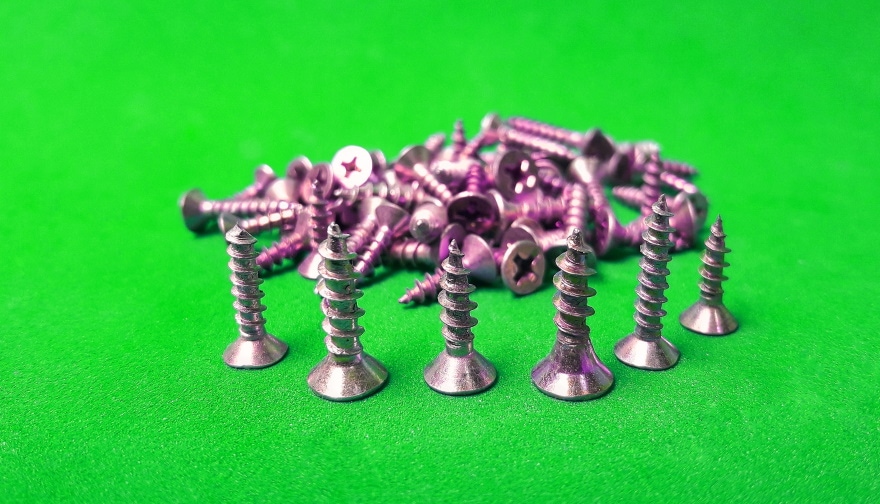Can You Hammer in a Screw? Types, Methods & FAQ
-
Pete Ortiz
- Last updated:
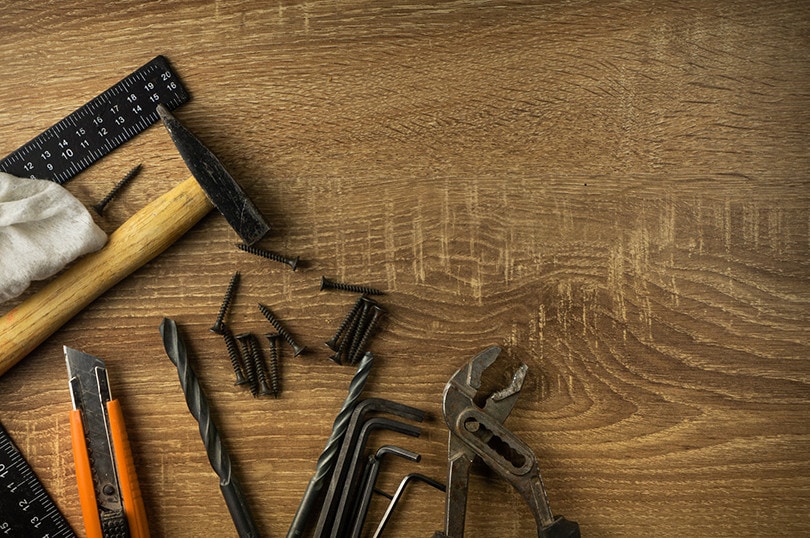
If you like to do some DIY work in your backyard or garage, screws are a must-have. Slender, sharp-pointed, and extremely durable, these fasteners are perfect for wood, metal, and stone. But what if you don’t have a screwdriver to turn those screws? Can you use a hammer instead? The answer is yes, but only if you apply the right techniques. Otherwise, you’ll end up ruining the screw heads.
The wall will be damaged as well, causing an expensive repair. In this guide, we’ll talk about hammering screws in the right way. We’ll also cover protective gear, common screw types, the average shelf life, and how to remove screws with a hammer. So, is hammering screws a good idea? Let’s find out!
What Is a Screw?
The biggest difference between a nail and a screw is that a screw has a much stronger grip. Its tensile strength is simply unmatched. On top of that, screws handle vertical force/pressure a lot easier than nails do. Essentially, a screw is a metal pin with a helical thread, and it’s this threading that makes screws the “next step of evolution” compared to nails.
If you mostly work with wood cabinets, ledge boards, or, let’s say, plastic, metal, and even stone, screws should be the obvious choice. They hold tighter, last longer, and come at an affordable price. More importantly, if you’re an amateur woodworker, screws will be safer to work with (vs. accidentally hitting your hand/finger with a hammer when you miss the nail head).
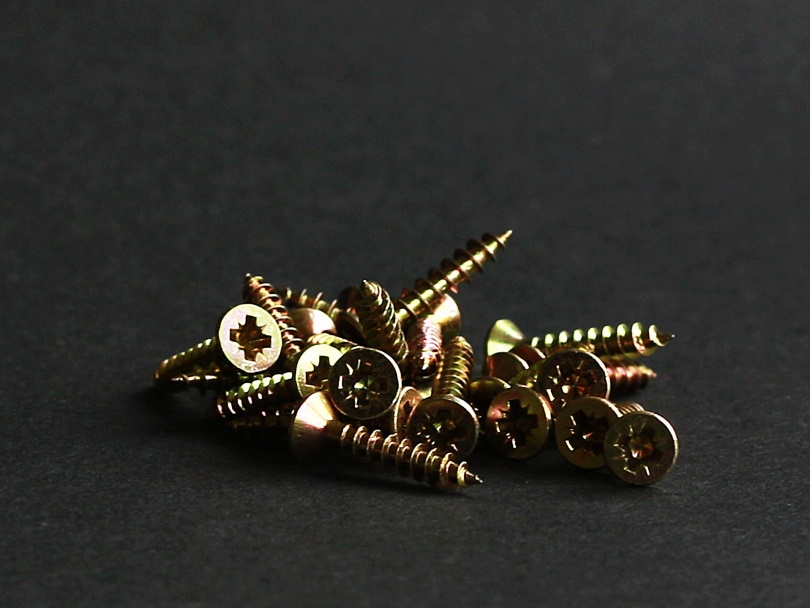
Are There Different Types of Screws? Does That Matter?
In many ways, all screws are similar. Still, if you want to get a bit more familiar with these fasteners, here’s a quick look at the six most commonly used types:
- First, we have the wood screws, and no, they’re NOT made of wood. Instead, they are shaped in a way to easily pierce through wood without damaging the surface.
- In contrast to all the other screws out there, security screws don’t have standard heads. This means you won’t be able to remove them with a conventional screwdriver, and that’s what makes them secure.
- The lag screws/bolts are much like wood screws, but they’re covered in zinc to resist corrosion. A bit more expensive, but worth it.
- Machine screws are a bit different (and bigger) as their #1 job is to hold metal together. These screws are mostly used by professionals.
- Sheet metal screws are used just for that: holding sheet metal together. Thanks to extended threading, they take little effort to pierce through metal.
- And finally, twin-fast screws have a double-thread design and take less time and effort to drive into a surface (mainly drywall).
The one thing to keep in mind is that no matter what type of a screw you’ve got, the outcome will be roughly the same when you hit it with a hammer. What will happen, exactly? Let’s find that out next!
So, Can You Use a Hammer on a Screw?
The answer is yes, you can, indeed, hammer in a screw. All you have to do is hit the head as accurately as you can, and that should do the trick. As far as the most suitable materials go, gypsum and drywall are on top of the list. There’s a catch, though: even if you do successfully drive the screw into the wall, the grip will be very weak. That’s because the threads will just make a large hole, not create a strong bond.
Depending on how hard you hammer the screw in or how resistant the wall is the screw may just fall off and be virtually useless. Even if it does stay on that wall, you won’t be able to hang a picture from it or do anything like that. What should you do, then?
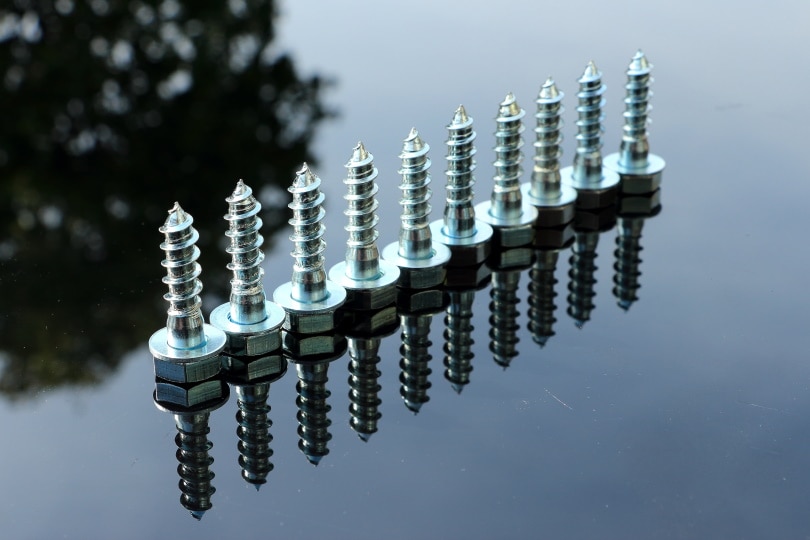
The Best Techniques for Hammering in a Screw
There is a nifty trick: before going head-first with the screw, start with a nail. Hammer it in, then remove it and put the screw in its place. Or you can pour some liquid glue in there. To improve the screw’s chances of holding it all together tightly, add a bunch of toothpicks into the hole and cut the tips. That will give the screw something to hold onto.
Is This Ever a Good Idea?
The only time when you might want to hammer in a screw instead of using a screwdriver would be on drywall panels. Just tap gently on the head of each screw to hold the panel in place. Then, grab a driver or an electric drill and finish the job. This does require some expertise, of course, but tends to save time in the long run, which is why many contractors use this swift technique.
And remember: if the screw is already stripped, the hammer will be the only tool that will help you drive it into the wall—no screwdriver will work on it.
Tips for Not Ruining Screwdriver Heads
Do your best to land your hits on the center of the head. If the hammer hits the screw at a different angle, you’ll run the risk of stripping the head beyond repair and making it harder to remove it later. The same happens when you over-tighten a screw with a screwdriver. But what about the hammer, though? As a general rule, the larger the hammer’s face/head, the better.
That way, you’ll have a lot more room for mistakes as you’ll still be hitting the screw properly even if you tilt the hammer a bit. In any case, screws aren’t designed to be hammered. That means they’re a lot less impact-resistant than regular nails and tend to break/snap.
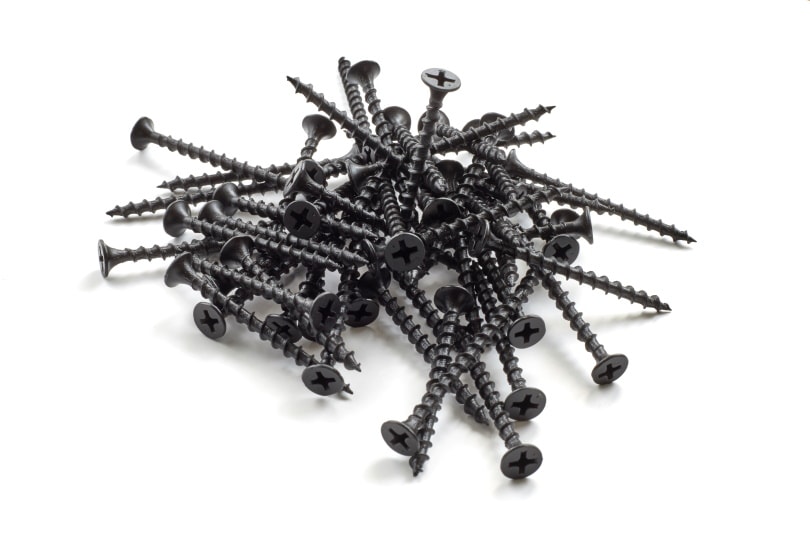
Don’t Forget About Protective Equipment!
Still not convinced that hammering screws in is not such a good idea? Then put on protective gear before doing any work. Most importantly, get a pair of work gloves (unless you already have them). Even if you’re a pro with hand tools, it’s not uncommon for the hammer to slip off the nail/screw head and hit your hand. Make sure to protect your eyes as well.
When you’re pounding the screw with everything you’ve got, the hammer might chip tiny pieces off and they’ll head straight for your eyes. But if you have gloves and goggles, safety glasses, or a face shield, there won’t be anything to worry about.
Why Use a Screwdriver in the First Place?
It’s rather obvious: screwdrivers are specifically designed to drive screws in and out. They are very easy to use, don’t pose a threat to the operator’s health, and won’t ruin the actual screw or the surface unless you deliberately try to do that. Most screwdrivers can handle a wide range of tasks as they come with various tips/heads that only take a moment to switch between.
The same is true for electric drills that include different bits intended for different materials and applications. If you do lots of construction work or just love DIY projects, an electric drill is the best tool out there.
Can You Remove a Screw with a Hammer?
Well, if it’s a claw, trim, or a framing hammer, then yes. It won’t be easy, of course: screws are much harder to remove than nails using brute force. The reason: they create a much stronger “bond” with the wall. Still, depending on how long the screw is (and whether it’s double-threaded, or not), this could work. Even if you don’t pull it out completely, that might give the screwdriver enough grip to remove it.
Or you can put a new screw on top of the old one, tap on it slightly with a hammer and then turn them both out with a screwdriver. You do have to be incredibly careful, though, especially if you’re working with expensive wood like maple, cherry, or, let’s say, oak. Otherwise, you’ll end up damaging the surface and you won’t even be able to put a new screw into the same hole, as the hammer will ruin it.
How Long Do Screws Last?
On the shelf, they last forever. That’s right: unless you keep them in an extremely moist environment, screws won’t deteriorate or lose their grip. If you’re worried a bit about the humidity levels in your area, go with lag screws, as they feature extra protection against rust. Without it, the screws won’t hold up for very long. Or, better yet, get a set of stainless steel screws.
They are practically immune to rust. The coating, in contrast, does “wear off” over time, leaving the metal exposed to natural elements. With steel screws, you can even put them in a plastic bag (known to retain moisture) or use them to fasten wood, metal, or any material underwater. So, how long do screws last? It depends on the material, coating, and climate.
 In Conclusion
In Conclusion
Hammers and screws don’t usually go well together—that’s the first thing to remember. However, if you’re busy working on a new project and the screwdriver suddenly gives up on you, it is very well possible to push those screws in using a good old hammer. We wouldn’t recommend doing that every day, though, as it’s easier to just buy a new screwdriver (or ask a neighbor to lend it to you).
With a hammer, you’ll most likely end up ruining both the screw and the surface, causing yourself one big headache. Besides, you need to be very careful and wear protective gear all the time. Be safe, use the right tools/equipment for the job, and only hammer in screws when absolutely necessary!
- You might also like: 8 Best Plasma Cutters – Top Picks & Reviews
Featured Image Credit: Konstantin Evdokimov, Unsplash
Contents


